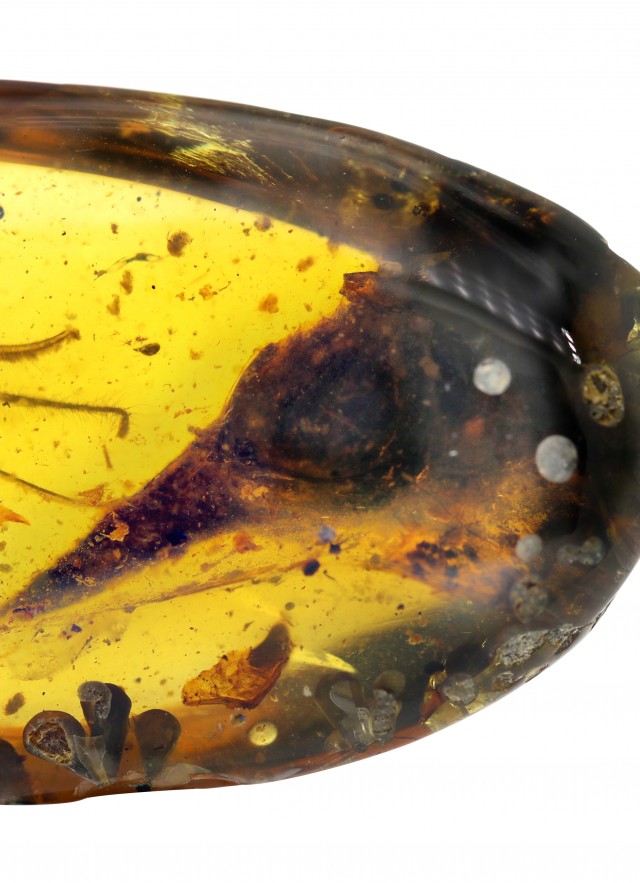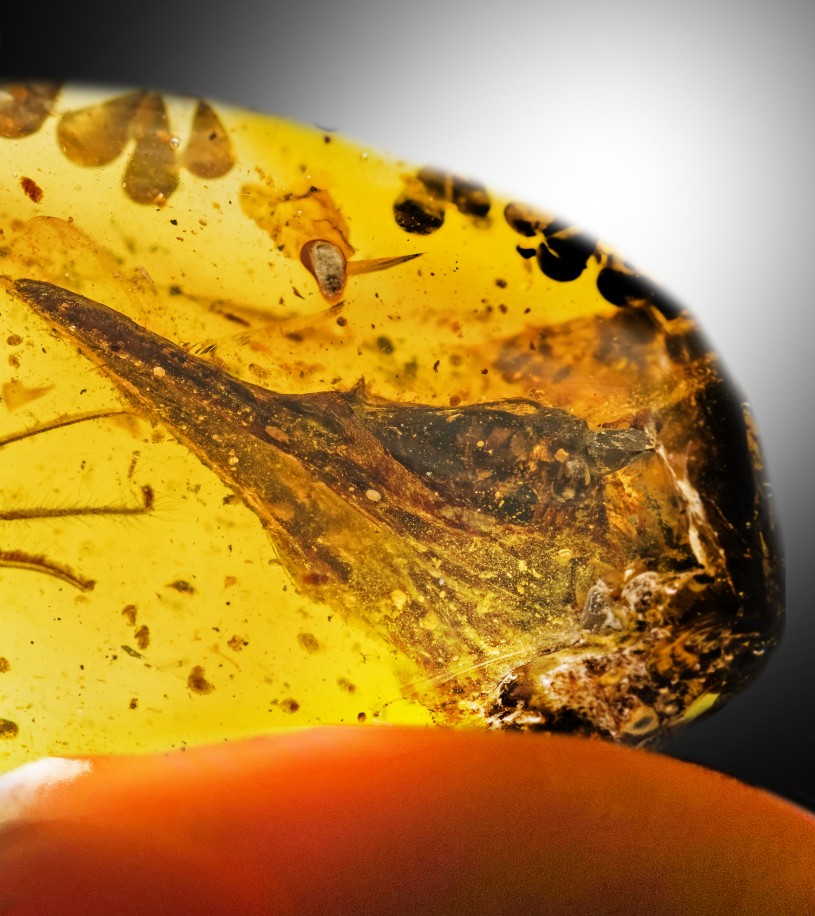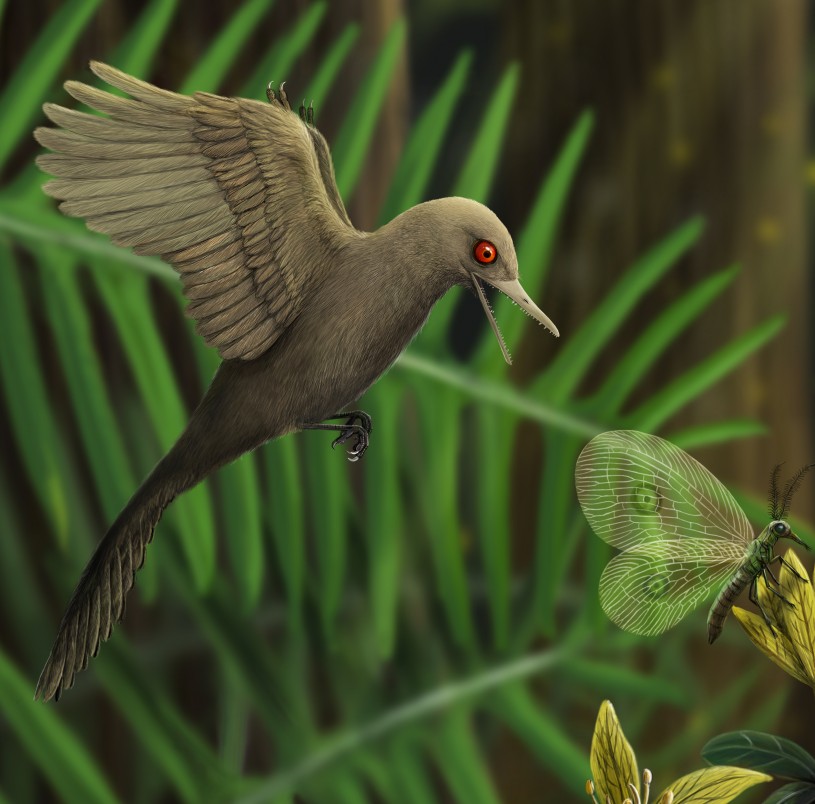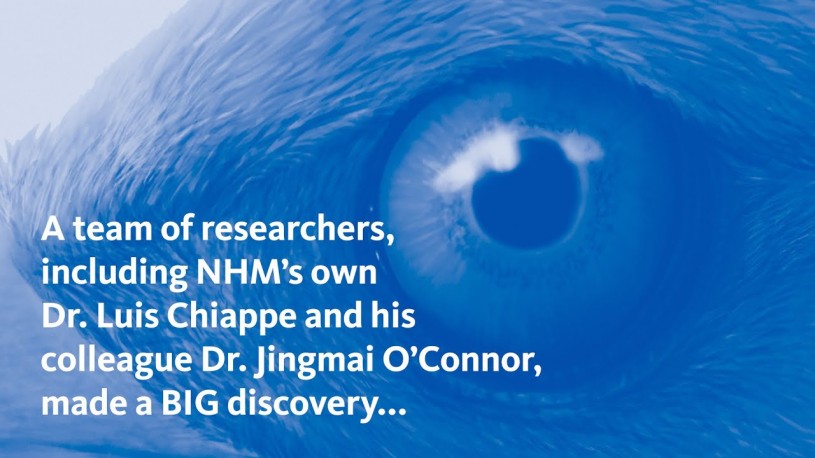A Tiny Dinosaur and a Big Discovery
An international team, including NHM scientists, discovered the smallest dinosaur ever found, almost perfectly preserved

An international team, including scientists affiliated with NHM, discovered the skull of a tiny dinosaur trapped in 99-million-year-old amber from Myanmar. It was about the size of a bee hummingbird, making it the smallest dinosaur discovered yet. The findings were published today in Nature.

The new species is named Oculudentavis or "eye-tooth-bird” for its weird features—large eyes and lots of teeth. Researchers found that Oculudentavis had more teeth than any other fossil bird suggesting that despite its tiny size, Oculudentavis was a predator. It earned the nickname “the cretaceous terror of insects,” by Dr. Jingmai O’Connor, Senior Professor, Institute of Vertebrate Paleontology and Paleoanthropology of the Chinese Academy of Sciences, Research Associate at NHM and a lead author on the study.

Analyses targeted at understanding the relationship between Oculudentavis and other fossil birds suggest that the new tiny bird is very primitive, placed between Archaeopteryx, the oldest (155-150 million years old) and most primitive bird, and Jeholornis, a long boney-tailed bird from 120-million-year-old deposits in China. It was an especially remarkable find, notes Dr. Luis Chiappe, NHM’s Senior Vice President of Research and Collections and Director of the Dinosaur Institute. “It’s lucky this tiny creature was preserved in amber, as such small, fragile animals aren’t common in the fossil record,” Dr. Chiappe said.
Dr. O’Connor was thrilled by this discovery. “It's really the coolest specimen that I've ever had the honor and been lucky enough to study," she said. “This is not something you find every day.”
To learn more about this big discovery check out the video below:
